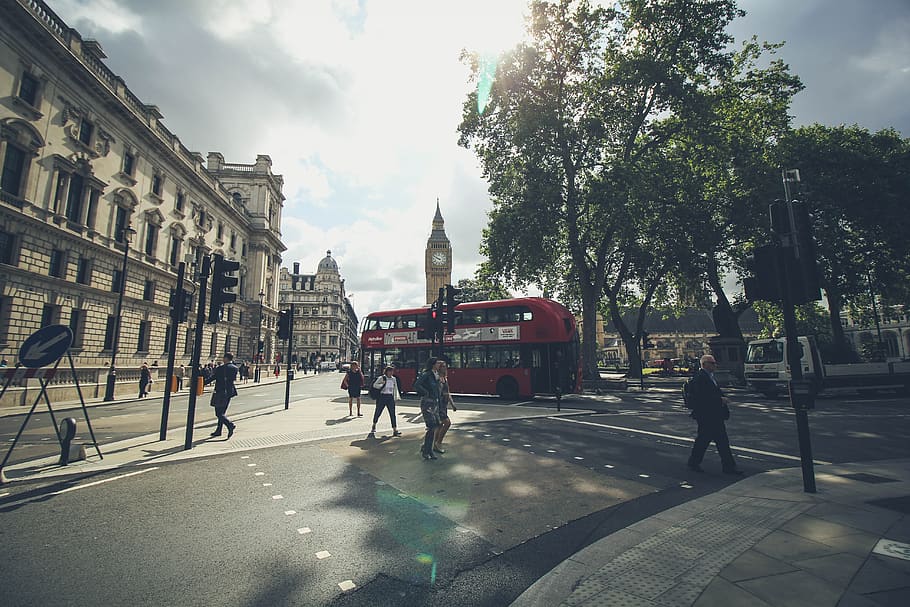Healthy Streets
Contents |
[edit] Introduction
Healthy Streets and its 10 Indicators are concepts that first appeared in Transport for London policy in 2014. The programme was developed by Lucy Saunders, a specialist in public health and transport, and the term was officially introduced by London Mayor Sadiq Khan in October 2016. This approach to urban development puts the emphasis on streets that promote active pedestrian and public transport travel, have clean air and are safe.
The goal of Healthy Streets is to design a long-term plan that encourages people to walk and cycle throughout London. While this concept will be applied differently based on location, examples such as the pedestrianisation of Oxford Street and the Rotherhithe to Canary Wharf cycle bridge are part of the plan.
[edit] Indicators
The 10 indicators of Healthy streets are:
- People choose to walk, cycle and use public transport.
- Pedestrians from all walks of life.
- Easy to cross.
- People feel safe.
- Things to see and do.
- Places to stop and rest.
- People feel relaxed.
- Not too noisy.
- Clean air.
- Shade and shelter.
[edit] Three levels of Healthy Streets
Healthy Streets operate at three levels:
- Street – walking, cycling and better overall public spaces.
- Transport – walking and cycling and better public transport routes.
- Strategic – walking and cycling to shops, schools or work supported by better development patterns..
By 2025, the programme seeks to cut London’s carbon dioxide levels by 60% (compared to 1990 levels) and increase daily walking or cycling trips for Londoners by up to 20 minutes per day.
[edit] Health factors
With a reduction or redirection of road traffic through the Healthy Streets programme, people will be able to experience health benefits such as:
- Exercising more regularly through walking or cycling.
- Experiencing cleaner air and less noise pollution.
- Enjoying safer roads.
Mental health levels can also be improved through this initiative, since people will benefit from more direct environmental experiences enhanced by interesting and attractive parts of the city they may have otherwise missed.
You can find out more at: https://tfl.gov.uk/corporate/about-tfl/how-we-work/planning-for-the-future/healthy-streets
[edit] Related articles on Designing Buildings Wiki
- Cycling and walking plan.
- Dedicated and safe cycle lanes.
- Designing for pedestrians.
- Infrastructure under Mayor Sadiq Khan.
- Road traffic management.
- Safe Pedestrian Route.
- The London Plan.
- Urban design.
[edit] External references
Featured articles and news
RTPI leader to become new CIOB Chief Executive Officer
Dr Victoria Hills MRTPI, FICE to take over after Caroline Gumble’s departure.
Social and affordable housing, a long term plan for delivery
The “Delivering a Decade of Renewal for Social and Affordable Housing” strategy sets out future path.
A change to adoptive architecture
Effects of global weather warming on architectural detailing, material choice and human interaction.
The proposed publicly owned and backed subsidiary of Homes England, to facilitate new homes.
How big is the problem and what can we do to mitigate the effects?
Overheating guidance and tools for building designers
A number of cool guides to help with the heat.
The UK's Modern Industrial Strategy: A 10 year plan
Previous consultation criticism, current key elements and general support with some persisting reservations.
Building Safety Regulator reforms
New roles, new staff and a new fast track service pave the way for a single construction regulator.
Architectural Technologist CPDs and Communications
CIAT CPD… and how you can do it!
Cooling centres and cool spaces
Managing extreme heat in cities by directing the public to places for heat stress relief and water sources.
Winter gardens: A brief history and warm variations
Extending the season with glass in different forms and terms.
Restoring Great Yarmouth's Winter Gardens
Transforming one of the least sustainable constructions imaginable.
Construction Skills Mission Board launch sector drive
Newly formed government and industry collaboration set strategy for recruiting an additional 100,000 construction workers a year.
New Architects Code comes into effect in September 2025
ARB Architects Code of Conduct and Practice available with ongoing consultation regarding guidance.
Welsh Skills Body (Medr) launches ambitious plan
The new skills body brings together funding and regulation of tertiary education and research for the devolved nation.
Paul Gandy FCIOB announced as next CIOB President
Former Tilbury Douglas CEO takes helm.
UK Infrastructure: A 10 Year Strategy. In brief with reactions
With the National Infrastructure and Service Transformation Authority (NISTA).























